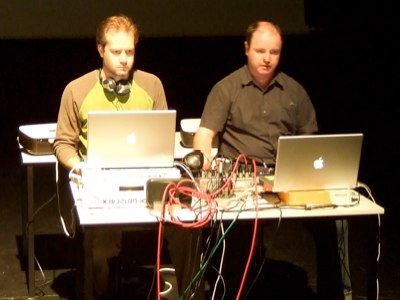With Andrew Sorensen, I’ve been part of the live coding duo aa-cell since 2005. In live coding, musical algorithms are coded and edited during the performance. Typically, the laptop screens are projected so the audience can see how the music builds and changes. This practice is an adaptive process because as improvising performers aa-cell adjust the music by changing the meta-description of it (the code) as the performance proceeds. In live coding music, the computer becomes an instrument which is played by the direct construction and manipulation of symbolic musical descriptions. Gestural control in limited to typing at the computer keyboard but, unlike traditional keyboard instruments, these key gestures are indirect in their effect on the sonic result. Instead, program text is interpreted by the computer in real-time. The code is a medium of expression through which creative ideas are articulated. The code acts directly as a notation of computational processes and indirectly as a notation of musical ideas. It not only leads to the sonic outcome but also is available for reflection, reuse and modification during performance. Musical parameters described by the code are open to some variation can relate to sound synthesis at one end of the time-scale to the structural organisation of musical events or sections at the other end. When jamming with code, the time constraints of the live performance environment force the performer to develop succinct and parsimonious expressions, and to create processes that sustain activity (often using repetition, iteration and evolution) in order to maintain a coherent and developing musical structure during the performance. As a result, live coding requires not only particular performance skills but also new ways of describing the structures of and processes that create music. Check out my article on Live Coding published in the M/C Journal in 2006 for more descriptions of this practice. Andrew Sorensen and I have an article about the techniques used by aa-cell published at ICMC 2007. Audio and video examples of early aa-cell performances are available form MySpace and YouTube.

